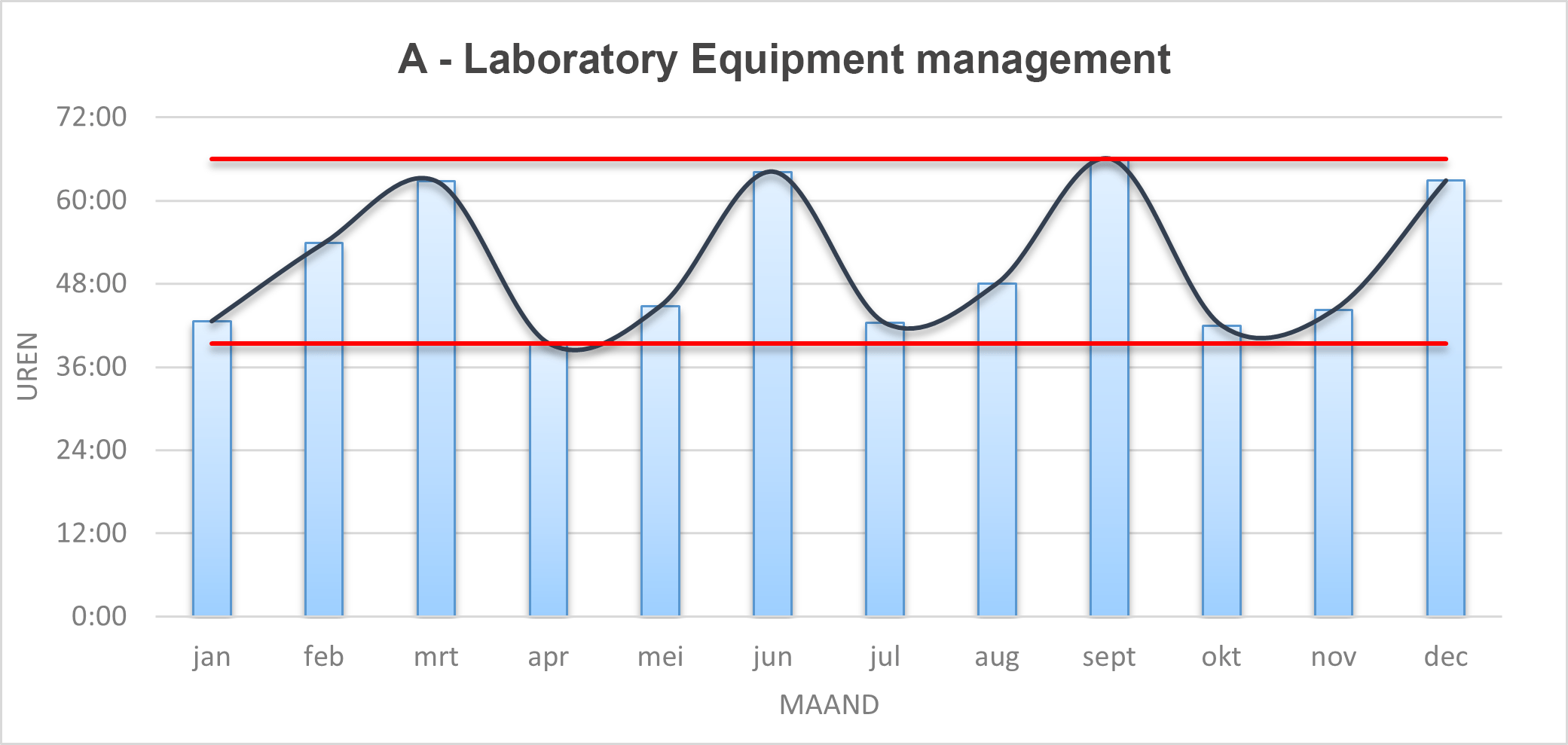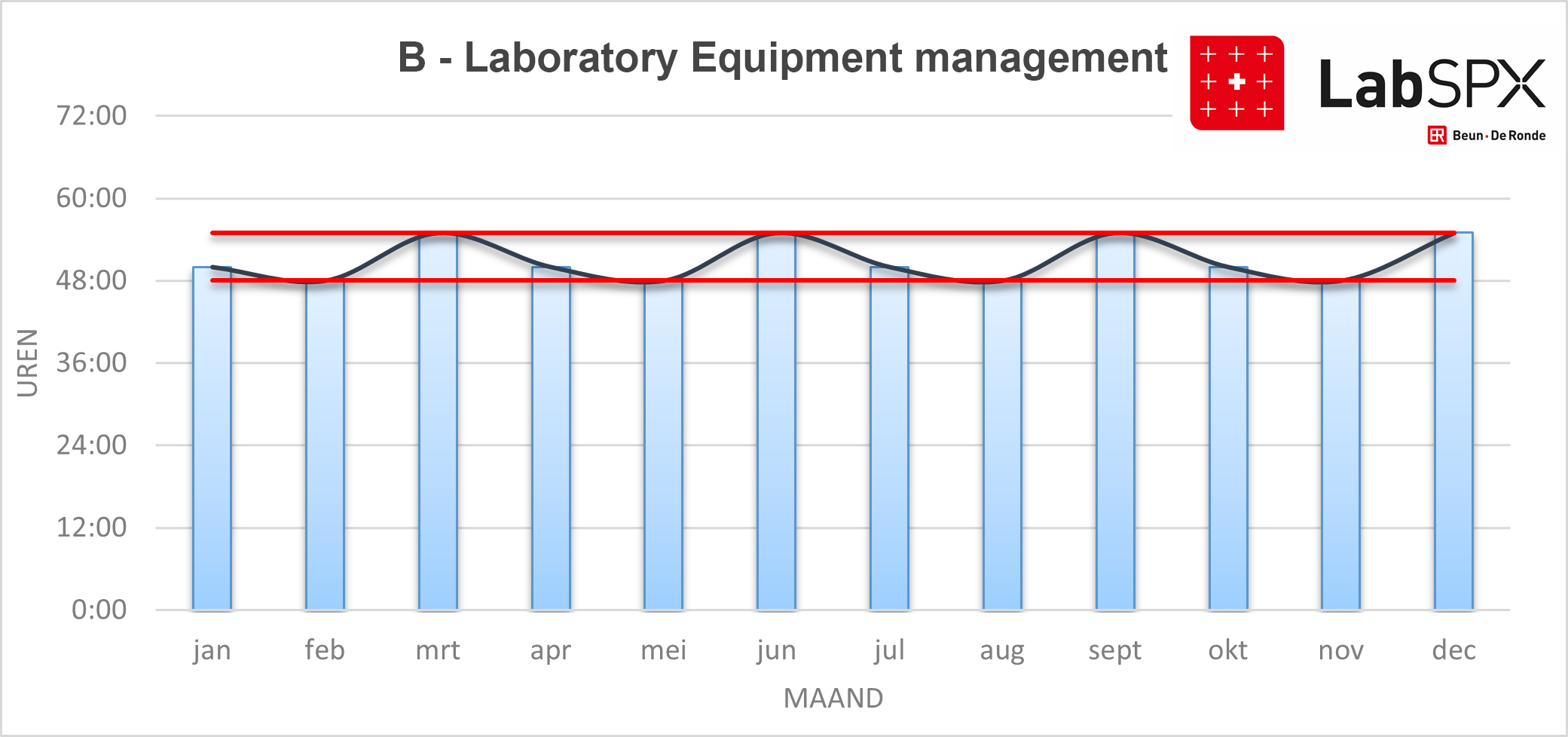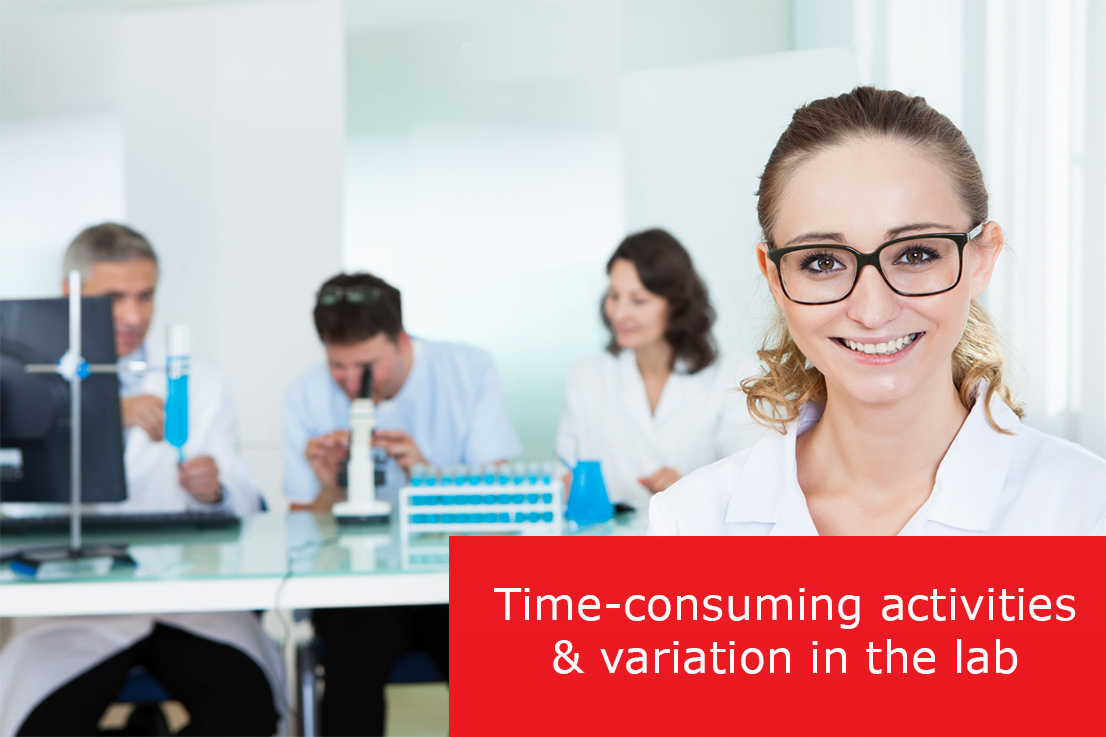How many hours per month are consumed in your lab by time-consuming side activities? Is there a lot of variation in hours between the months? Being in contact with researchers we find that this information is not at hand. For this reason it is not transparent how much there is to gain in efficiency, but LabSPX can help you to find this information in your lab.
Often we find a huge variation in side activities distribution per month. This form of ‘waste’ is invisible and has a negative impact on your lab.
We take your instruments and internal quality very serious
LabSPX offers a unique laboratory service: our on-site service will take full responsibility of all side tasks which are necessary in your lab, but do not add value for your customers. This way you can spend more time on your lab work. Together we will decide how we can assist you with our service to realize the highest impact in your laboratory. But we can go one step further, we will also focus on how to improve efficiency. efficiënter kunnen maken.
Example: let’s look at Graph A.the month of March compared to April. In March we see a 26 hours difference in hours required for instrument related tasks. (i.d. validations and maintenance). This directly translates into an huge decrease of available researchers and instrument availability.

The variation in available researchers and instruments has a direct impact on productivity in the lab. Lab personnel will always do their outmost best to get all the work done, but the work given and the amount of time will play a critical factor in day to day business.
Validation and maintenance, for example, is always periodic. This means “it can be planned”. LabSPX centralizes instrument management related tasks and minimizes variation in hours per month. See Graph B. We plan our labour with high efficiency make sure your instruments availability is distributed equally over the year, or wherever you see fit.

After LabSPX has reduced instrument task hours variation per month, we go ahead and take the next step in increasing efficiency in your lab. Want to know how? Read about it in our next blog.

